ABOUT LITTON CHENEY



LITTON CHENEY IN WARTIME


5. No. 9 The Paddocks
6. No. 11 The Paddocks
7. Village Shop/The Forge
George and Mary Curtis were here in 1939 with George running a blacksmith’s forge and Mary the village shop. In poor health
George planned to retire and in December 1939 advertised the forge: Good Shoeing and General Smith’s business, suitable single
man; no opposition, nice premises, no residence. Ingoing at valuation, roughly £70; rent £12 per year. George sadly died shortly
afterwards, and Mary continued running the shop throughout the war.
Belinda Brocklehurst remembers we were lucky in the village as there was a tiny village shop owned by Mrs Curtis who seemed
ancient to me, a dear little old lady and her daughter. When we could get sweets, I used to take my ration book to her and get lemon
sherbets and toffees, there were no chocolate sweets around like Crunchies and Mars Bars.
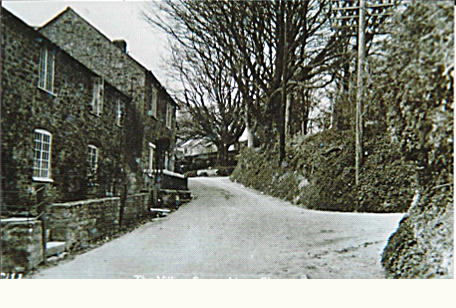
Village Shop
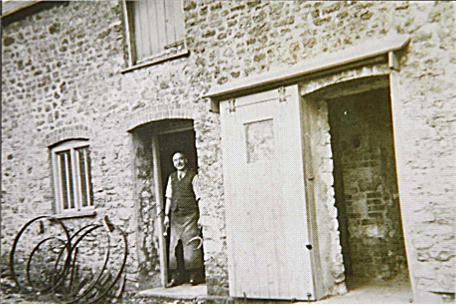
George Curtis at the forge
8. The Post Office
By 1935 the Post Office was back in Enmore, with Ernest Morgan the postmaster. In 1939 Ernest’s wife Nellie and daughter
Myfanwy were running the Post Office. The area was known as Post Office Corner. Joseph Willcox bought the house from the
Morgan family in 1941.
Belinda Brocklehurst recalls we also had a Post Office which in the early part of the war was in the lane on the way to the Church
and I think run by Mr and Mrs Thornton.
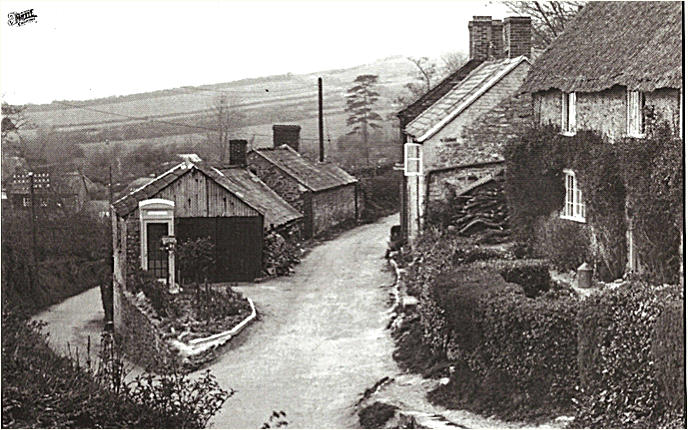
Post Office Corner and old K2 Phone Box
9. Rose Cottage
Bill and Hilda Willcox lived here from 1940. Bill ran a village bus service at this time. While he was serving in the Far East his wife
Hilda and daughter Maureen stayed in Bridport with Hilda’s mother. On 16
th
December 1942 a German bomber dropped four
bombs on the town, one of which fell on 92-96 East Street, killing three-year-old Maureen and injuring her mother.
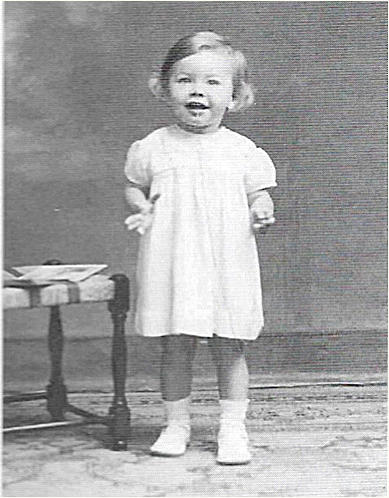
Maureen Willcox

Bedford OB Coaches in Litton and Dorchester used by Bill Willcox
10. The Sunday School
The corrugated iron building was used for Sunday School meetings and many village events, some of whixh had to held
elsewhere at various times in the war.
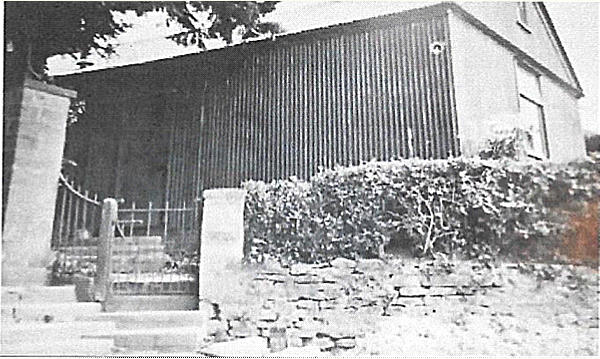
Early in the Second World War it was used as a billet for 42 men. The 257
th
Battery, Royal Artillery trained in Litton before active
service, many of them subsequently losing their lives at Dunkirk. One of them, Eric Davis took the photo of soldiers on the steps to
the church and hall.
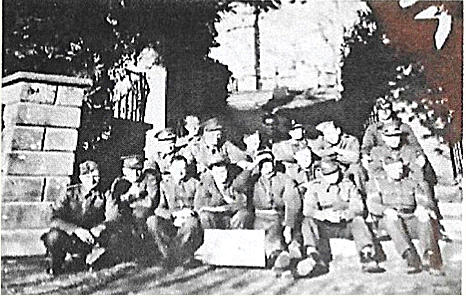
Members of the 257
th
Battery
11. The War Memorial
The aftermath of the First World War saw a huge wave of public commemoration with thousands of memorials erected across the
country. One such memorial was erected here in 1920 to remember nine men of Litton Cheney who died during the conflict. A
further inscription was added following the Second World War to commemorate six men who died in that conflict.
The memorial comprises a Celtic cross with a tapering shaft about two metres high, set upon a trapezoidal plinth and a square
base. A longsword is carved in raised relief on the cross. The plinth and base are inscribed with the names and service branch or
regiment of those who died in the two World Wars.
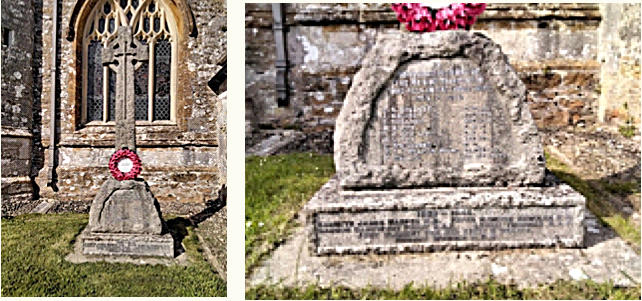
Peter Newman was the son of Charles and Gertrude Norman of the Court House. He was a captain, Royal Artillery, Air OP and
died on 16
th
September 1943 at Salerno, Italy.
Carson Proby was born in Vancouver, Canada and was the nephew of the Rector Edward Daniell’s second wife. He was a Flying
Officer, 413 Squadron RAF. He died on 22
nd
October 1941 when Catalina AH566 was shot down by a German B&V 138 Flying
Boat.
Leslie Thorner was the son of Elizabeth and was brought up at his grandparent’s house in Litton and worked as a builder for
Charlie Fry before joining up. He was a trooper in the 148
th
Regiment, Royal Armoured Corps. He was killed in action on 11
th
July
1944, aged 22.
John Van der Kiste was born in 1907 in Ireland. He married Barbara, daughter of Charles and Gertrude Norman of the Court
house in 1939. He was a captain, 2
nd
Battalion, North Staffordshire Regiment. He died on 24
th
May 1940 in France just days before
the Dunkirk evacuation.
Robert Webber was the son of William and Mary Webber. He was an able seaman on HMS Glorious and died on 9
th
June 1940
when she was sunk by the German battle cruiser Scharnhorst near the Lofoten Islands, Norway.
Kenneth Harper was the son of Lieutenant Alexander Forrest Harper of Litton. He died on 14
th
April 1940 when HMS Thistle was
torpedoed and sunk with all hands by a German U-Boat off Skudenes, Norway. The wreck of the submarine was discovered by a
Norwegian survey team in the spring of 2023 at a depth of 160 metres.
.
12. St. Mary’s Church
In 1939 a sub committee was formed to arrange the necessary blackout screening of the church windows so that evening services
could continue to be held during the war. The cost was initially estimated to be about £10 but the blackout eventually cost about
£14, and a box was placed in the church for subscriptions. It was also agreed that the church bell be rung at noon for prayer.
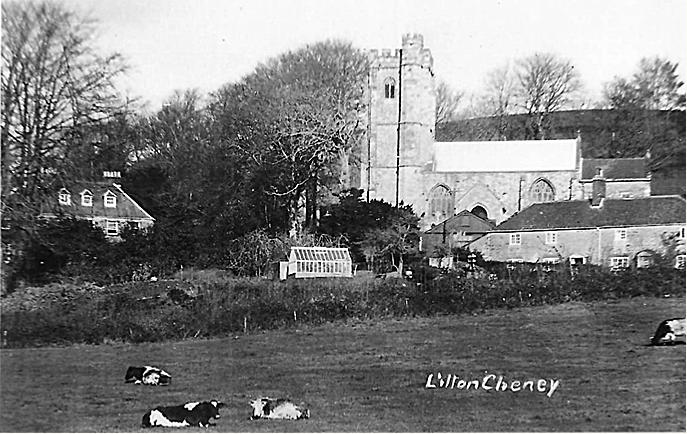
The Rectory, St. Mary’s Church, Sunday School and Rectory Cottages
Belinda Brocklehurst recalled Sundays were a special day in Litton Cheney. The Church bells were not allowed to be rung, as I
think this was to be used as a sign of invasion, but the local regiment always marched through the village to the Church, first the
mascot- I well remember a goat which one of the regiments had, then the regiment band, then the officers and soldiers and finally
the village peeled out of their houses and joined the procession up the hill to the Church. Luckily it was a big church with room for
everyone.
I remember going to my younger sister’s christening up at Litton Cheney church sucking a huge gobstopper which had come out
of a precious bag of sweets one of the soldiers had given me. Just before the service started my father noticed this huge thing in
my mouth and to my great dismay made me go out of the church and spit it out into the hedge! I held this against him for a very
long time!
In February 1941 the Rector, Canon Daniell reported that he had several regrets. First of all, there was a falling off in attendance
at both Holy Communion and Church services, there was an unfortunate lack of missionary zeal, all probably due to the added
war-time activities of the village. In addition, there was the disappointing feature of a diminishing revenue from the Duplex system,
and he appealed for more subscribers. This system saw the congregation receiving a weekly envelope with designated sections
for donations of funds for various church needs including upkeep, missions and outreach programmes.
In August 1941 there was a discussion on subscribing towards the purchase of a bier, to be used initially by the first aid post as a
wheeled stretcher, with £5 offered.
In February 1942 the Rector said that there had been a falling off in church attendance and in contributions to church funds. There
were genuine reasons for this, but there were also mere excuses for a waning sense of duty to God. The missionary activities of
the parish had suffered through the many other calls on our time, but he reminded us of the primary purpose for which the church
existed- the worship of God and the extension of His Kingdom throughout the world.
In March 1943 the Rector was sorry to point out that there was a sign of declension of attendance, especially at Holy Communion.
He asked all to remember in their prayers his work and to give all the support they could. He stressed the need for congregational
worship and continued support in the maintenance of our church and the Extension of the Church’s activities through the Duplex
and special funds. One last request that all should remember in their prayers the men on active service.
In February 1945 the Rector deeply regretted that Mr Andrews, lay-reader, people’s warden and treasurer, was to leave the parish
in June. Mr Birchall, the new headmaster was elected as the new Secretary. The importance of the compilation of the magazine of
the joint parishes was noted. It was decided to write to the editor, Rev Tyson to ask if forthcoming films could be advertised in the
pages, for the benefit of parishioners who visit cinemas in the nearby towns. Mrs Harper said that when the Southern National
buses have a service through the village, perhaps they would issue a timetable to be printed in the magazine.
Sidney Trevett of Cross Tree Farm Cottages played the organ at church through the war years.
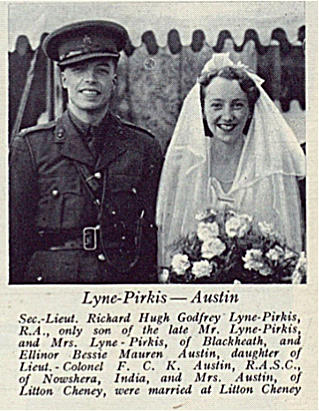
Tatler, December 11th 1940
Charles Baumber was a shoeing and general blacksmith living at 9, The Paddocks in 1939 with his wife Gladys, a launderess
and children Victor, aged 12 and Anne, aged 6.
A tragic accident occurred in October 1939 when Charles’ son Victor, aged twelve, was crushed to death in the mill wheel. An
Inquest was held in the village and a verdict of death by misadventure was returned. Evidence of identification was given by
Charles. Walter Masters said that when he left the mill at 3.30 pm on Friday the hatch had been lifted to free the mill wheel of
any water. Normally there would not be any water left in the buckets of the wheel, and it would take a great deal of weight to
turn the wheel round. There was a guard rail by the wheel and children had no right to go anywhere on the premises.
William Honeybun, aged 11, said he and Victor went fishing in the stream above the mill wheel. Victor suggested going inside
the mill wheel just to say he had been there.
Mrs Winifred Legg of the Bungalow said she saw the two boys playing near the mill wheel and later heard a shout. She
thought it was from some soldier who had been billeted at the mill and who, during the afternoon, had been starting the wheel.
Stanley Legg described how after the accident with P.C. Trevett he cut through the iron spoke of the wheel to release the boy.
Returning a verdict in accordance with the medical evidence the coroner said he had no doubt that the wheel had been left in
a safe position by Mr Masters, but it had been turned by other persons. He expressed his sympathy with the relatives.
Charles remembered that before Anthony Eden had finished his broadcast (May 1940) I had enrolled in the LDV (Local
Defence Volunteers) at Litton Cheney Police Station, which PC Trevett can verify. I served throughout the war under the
command of Colonel Duke of Martinstown, with Lt. Col. Newman as platoon commander, and I did not miss a parade or guard
for three years and then it was owing to my daughter’s illness. After her death I continued parades and beach patrols as
usual. Also, when we were expecting the invasion of our part of the coast and when “Jerry” used to come overhead with
hundreds of planes bombing and machine-gunning. I carried a rifle or Browning automatic to and from work for two years with
full magazines, ready for a low flying “Jerry”. When the Home Guard were stood down, I held the rank of corporal.
Leslie Thorner was the son of Elizabeth Thorner of Radipole. He was brought up at his grandparent’s house in Litton. In 1939
he was at 11, The Paddocks with his grandparents John and Elizabeth Thorner and worked as a carpenter for Charlie Fry
before joining up. He was a trooper in the 148
th
Regiment, Royal Armoured Corps. He was killed in action on 11
th
July 1944,
aged 22. He was buried at Ranville War Cemetery, Basse-Normandie, France.
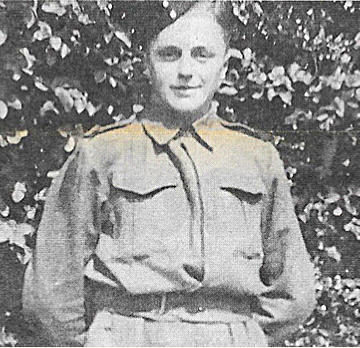
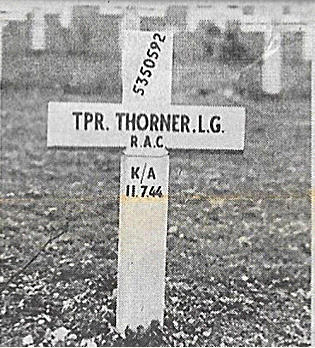
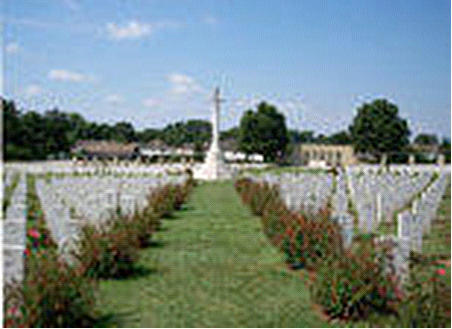
Ranville War Cemetery, France
Leslie Thorne




































